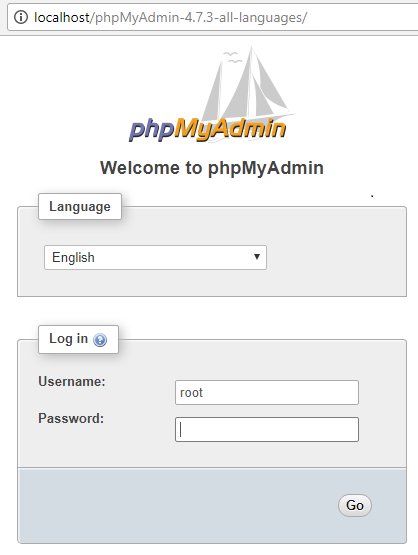

You should see the following output: +-+-+ Next, verify the authentication method again with the following command: mysql> SELECT user,plugin FROM er Next, flush the privileges to apply the changes: mysql> FLUSH PRIVILEGES Now, change the authentication plugin from auth_socket to mysql_native_password for your root user with the following command: mysql> ALTER USER IDENTIFIED WITH mysql_native_password BY 'secure-password' | debian-sys-maint | caching_sha2_password |

You should get the following output: +-+-+ To do so, login to MySQL shell with the following command: mysqlĪfter login, check the authentication method of all of your users run the following command: mysql> SELECT user,plugin FROM er So you will need to change this default authentication method from auth_socket to mysql_native_password in order to log in to phpMyAdmin as MySQL root user. Configure MySQL Serverīy default, the MySQL root user is set to authenticate using the auth_socket plugin by default rather than with a password in Ubuntu 20.04 running MySQL 5.7 or later versions.
PHPMYADMIN LOGIN UPDATE
Once logged in, make sure that your server is up-to-date by running the following commands: apt-get update -yĪpt-get upgrade -y 2. Make sure to replace IP_ADDRESS and PORT_NUMBER with your actual server IP address and SSH port number. To connect to your server as the root user, use the following command: ssh -p PORT_NUMBER
PHPMYADMIN LOGIN INSTALL
Install PhpMyAdmin from Ubuntu 20.04 repositoryīefore starting, you need to connect to your server via SSH as the root user or any other user with sudo privileges.
PHPMYADMIN LOGIN PDF

Create, edit, export and drop events and triggers.Create, edit, call, export and drop stored procedures and functions.phpMyAdmin Check referential integrity in MyISAM tables.phpMyAdmin Support InnoDB tables and foreign keys.Searching globally in a database or a subset of it.Creating complex queries using Query-by-example (QBE).phpMyAdmin import data from CSV and SQL.phpMyAdmin supports MySQL and MariaDB common features.The main phpMyAdmin features and highlights are: phpMyAdmin phpMyAdmin Features and Highlights Frequently used operations (managing databases, tables, columns, relations, indexes, users, permissions, etc) can be performed via the user interface, while you still have the ability to directly execute any SQL statement. phpMyAdmin supports a wide range of operations on MySQL and MariaDB. Wikipedia phpMyAdmin is a free software tool written in PHP, intended to handle the administration of MySQL over the Web. As a portable web application written primarily in PHP, it has become one of the most popular MySQL administration tools, especially for web hosting services. PhpMyAdmin External Qoutes phpMyAdmin is a free and open source administration tool for MySQL and MariaDB.


 0 kommentar(er)
0 kommentar(er)
